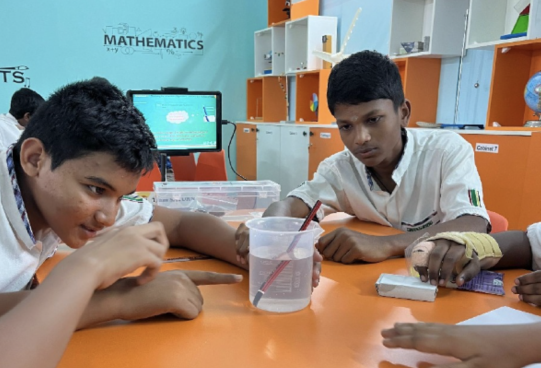Classroom Innovation in the 21st Century: Bridging
the Gap through Experiential Learning


In the fast-paced ever-evolving landscape of the 21st century, the traditional methods of education are facing increasing scrutiny. The evolving employment landscape and the complex demands of the modern world require a fundamental shift in how we prepare the younger generation. It's not merely about what they learn, but how they learn and apply knowledge. The current pedagogical approach, heavily reliant on content delivery, is falling short in fostering essential skills like critical thinking, problem-solving, creativity, and adaptability. To address these challenges, there's a pressing need for a paradigm shift towards experiential learning methodologies.
The National Education Policy 2020 recognizes these limitations and emphasises experiential learning in its guidance, acknowledging the need for a shift towards holistic and innovative educational approaches that equip students with 21st-century skills.
Filling the Gap through Experiential Learning
Experiential learning is the key to transforming education in the modern era. It encompasses a spectrum of methodologies that prioritize active engagement, hands-on experiences, and practical applications of knowledge. By shifting the focus from content-centered learning to learner-centered learning, students are empowered to think critically, solve problems, and innovate. Imagine moving beyond a teacher's lesson on surface tension to actually witnessing it in action through simple experiments using everyday items. For instance, placing a drop of water on a coin can help students grasp concepts better and understand why soap is effective in cleaning hands and clothes. These tangible experiences bridge the gap between theoretical knowledge and practical understanding.
This approach encourages holistic learning, integrating various disciplines through inquiry-driven, discovery-oriented, and practical-based activities. Experiential learning fosters an environment where discussions flourish, and flexibility in learning becomes the norm. It engages students in an enjoyable and immersive educational journey that sparks curiosity and nurtures a passion for lifelong learning.
CognoSpace: Transforming Classrooms with Experiential Learning
CognoSpace recognizes the urgent need for educational innovation. Our mission is to revolutionize classroom learning by introducing modern makerspaces in schools. These innovative spaces serve as hubs for hands-on, experiential learning that supports the exploration of STEAM concepts (Science, Technology, Engineering, Arts, and Mathematics) using DIY STEM kits and cutting-edge technology. Equipped with tools like 3D printing, robotics, augmented reality/virtual reality (AR/VR), and artificial intelligence (AI), these makerspaces provide a platform for students to engage in practical applications of theoretical knowledge. Through interactive activities and collaborative tasks, students not only comprehend complex concepts but also develop critical thinking, problem-solving, and creativity in a multidisciplinary setting.
By implementing a hands-on learning curriculum, CognoSpace aims to bridge the gap between theoretical learning and practical application. We believe that fostering a culture of experiential learning in classrooms will empower the next generation with the skills and mindset needed to thrive in a rapidly evolving world.
In conclusion, the future of education lies in embracing experiential learning methodologies. CognoSpace stands committed to be the catalyst in transforming traditional classrooms into dynamic spaces that inspire innovation, creativity, and a passion for continuous learning. Through experiential learning, we're not just teaching students what to learn; we're equipping them with the tools to adapt, innovate, and excel in a constantly changing world.
